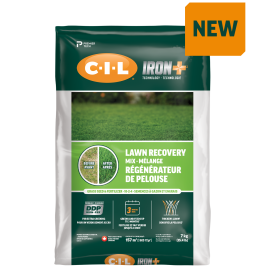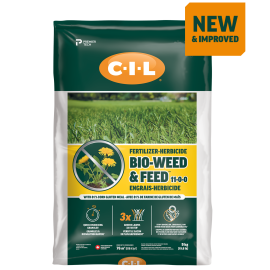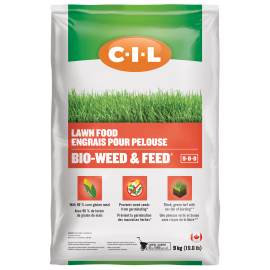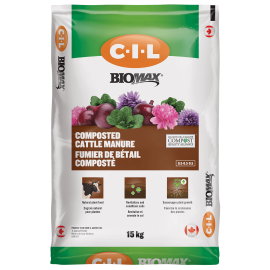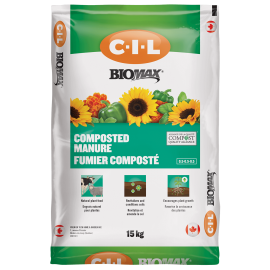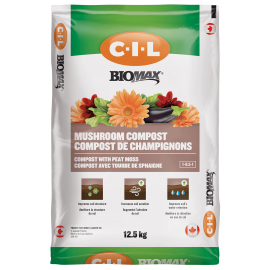Lawn care: What to do once the snow has melted?
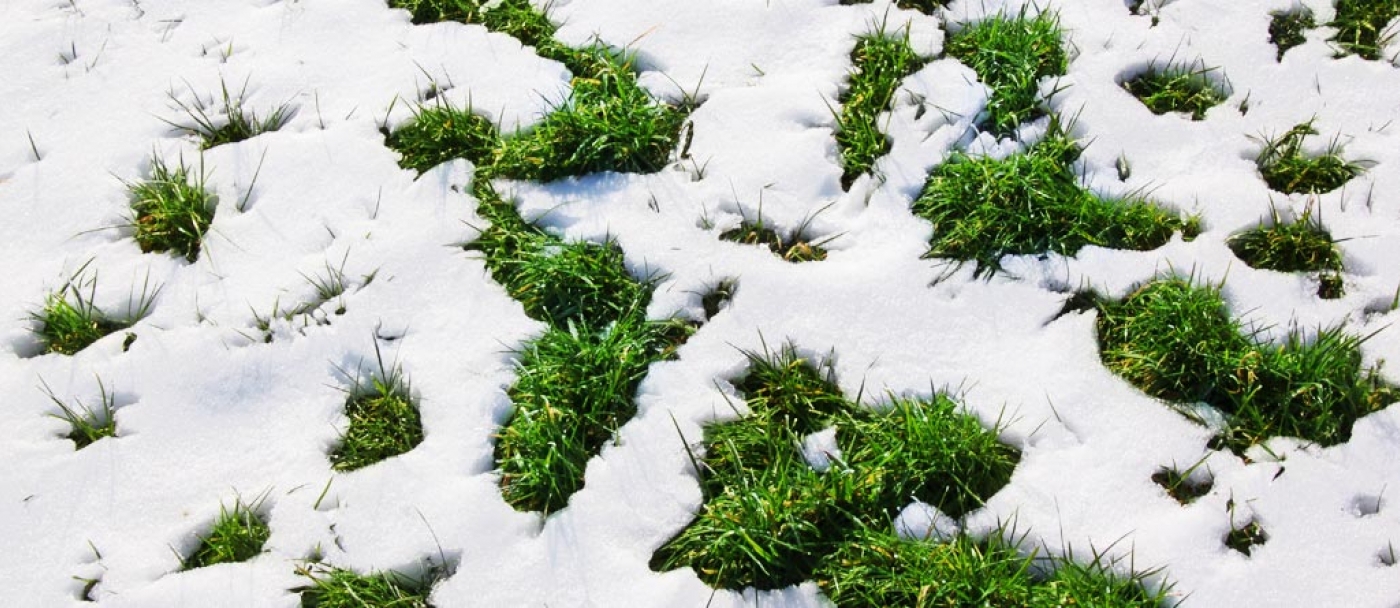
A beautiful lawn is a healthy lawn. Taking care of your lawn for three seasons helps it better withstand the ravages of winter. However, the melting snow sometimes reveals a surprise that you weren’t expecting.
Not to worry! With proper care, your lawn will quickly regain its health. Be careful though. Don't get to work until the snow has completely disappeared and the ground is no longer soft.
Once the ground is solid, put on your gardening gloves and take back control of the lawn!
The different lawn damages caused by winter stresses
Besides a yellowed or weakened lawn, you may notice other signs that show the fact that your lawn has suffered from the ravages of winter. Knowing how to identify them makes it possible to correct the problem and to enjoy a dense and green lawn as soon as possible.
Snow mold on the lawn
Did you notice irregular gray or orange spots on the surface of the lawn, mainly in places where the snow cover was thick? These spots are caused by microscopic fungi that thrive in damp and cold conditions. Although the areas covered by mold may seem imposing, they do not truly affect your lawn. Everything will be back to normal once the warm weather returns.
Lawn damage caused by frost or ice
This happens occasionally when there is insufficient snow cover to protect the lawn from extreme temperatures. It can also happen during freeze-thaw periods when ice builds up on the lawn. It ends up lacking oxygen and turns yellow. Warmer temperature will not solve the problem and you will have to sow in grass seed in these places to repair the damage.
Damage caused by de-icing salt
If you and your municipality use de-icing salts on your sidewalks, it will inevitably ends up on the edge of your lawn. When the snow melts, the water carries the salt into the soil, which is toxic to plants. Adding gypsum will help flush out the salts. Fortunately, frequent spring rains will help to wash the salt out of the root zone. However, to speed up recovery, or if the spring is dry, it is better to soak the areas with water to avoid ending up with a sparse lawn. You may have to add lawn soil and grass seed if it doesn’t come back.
Give your lawn a boost in the spring to snub the winter
Is your lawn slow to green up even though winter has left no specific damage? Chances are your lawn just needs a little help.
Since lawns are in a period of active growth in the spring, they can be remedied without too much difficulty. Letting nature do its thing is obviously a possibility, but without help, your lawn will take much longer to recover.
Here's how to make our lawn forget the long months spent buried under snow and promote a quick spring recovery.
Once the snow has melted and the ground has completely absorbed the water, rake the lawn. A good raking will can remove rocks, matted leaves, branches and other winter debris and will dislodge dead grass blades and excess thatch.
This step is essential to allow the lawn to regain its vigor more quickly. This improves the movement of air, water and the delivery of nutrients to the soil. By removing debris that is choking your lawn, you are also able to see what damage snow and ice may have caused so you can fix it quickly.
When should you dethatch?
Thatch is a layer of tan-grey organic debris that accumulates between the surface of the soil and the blades of grass. It is mainly made up of dead grass and clippings left over from mowing. The presence of a thin layer of thatch is not only normal but also healthy. This thatch insulates the soil and keeps the roots warmer in winter and cooler in summer. It also helps to prevent the germination of weed seeds.
Generally, it is not necessary to dethatch unless the thickness of the thatch layer exceeds 1.25 cm. A thicker thatch layer will prevent air, water and fertilizer from getting to the roots. It could also contain diseases and harmful insects.
If the water runs off without being absorbed by the soil, or if the thatch is so dense that it is impossible to poke a hole in it with your finger, it is a sign that it is time to dethatch. If you are unsure, use a sharp tool to remove a 5cm thick sample. Then, you will be able to better measure the thickness of the thatch layer.
Dethatching is usually done with a mechanical de-thatcher that uses blades to cut the thatch. However, if your lawn is not too big and you have a lot of energy, you can do this using a thatching rake.
Another way to reduce thatch is to add a thin layer of compost over the entire lawn. This composted material is full of beneficial bacteria that feeds on the thatch and adds to the lawn, organic matter and nutrients.
Aerate the lawn to oxygenate it
Aeration promotes the growth of deeper roots for a denser and stronger lawn. It is ideally done late in the spring or early in the fall.
When the soil is too compact, it is more difficult for water, oxygen and nutrients to penetrate to the grass roots. Aeration consists of making small holes in the soil, 7 to 10 centimeters (3-4 inches) deep using specialized equipment available for rent at garden centers.
You can leave the soil cores in place or break them up with a leaf rake if you want them to disappear more quickly. Or, more simply, run your lawn mower over them to break them up. Eventually the cores disappear. The core holes fill up with fresh organic matter and this encourages new roots growth and air/water penetration.
Top dressing and overseeding: how to do it?
A dense lawn more easily fights infestations of weeds and insects.
For dead patches, spread a 3 mm thickness of enriched lawn soil over the dead patches, i.e. approximately 1.5 to 2 bags of 25 liters per ten square meters, then level the surface using a rake. Add grass seed and rake it into the soil to get good seed to soil contact.
For general lawn rejuvenation, spread Premium Grass Seed with Fertilizer 2-5-2 with SURESTART® XTREME offers a superior blend of fertilizer, grass seed, compost and iron that thickens and greens the lawn while preventing the spread weeds. It greens up in 48 hours and stimulates soil activity for a stronger lawn.
Remember to keep the lawn moist for the next few weeks to ensure proper germination and rooting.
GET TO KNOW: Optimal germination occurs between 10°C and 25°C. Cool spring weather and freezing conditions will delay germination and growth.
Spring fertilization: which products to choose?
A complete fertilization program is applied over the entire season. Fertilizer promotes better recovery and guarantees a healthy lawn. Make a first fertilization in April or May by opting for a slow release fertilizer whose first number is high and therefore rich in nitrogen. C-I-L® Lawn Fertilizer 30-0-3 is the perfect choice to quickly get a beautiful, dense green lawn while making it strong and healthy.
To avoid burning the lawn and ensure you get the best results, use a spreader and be sure to follow the recommendations on the product packaging.
How to mow for a healthy lawn
The first spring mowing should be shorter than the other mowings of the year to allow the lawn to oxygenate well and regain its vigor. Take the time to properly sharpen the blades of your mower; a clean cut promotes lawn health. Dull mower blades shred the grass and leave an unsightly yellow hue to the lawn. Position the blades at 5 cm, at first, but raise it to 7.5-10 cm for the rest of the season. By cutting the lawn higher for the summer months, you are protecting the crowns of the grass from heat, holding in moisture longer and shielding it from weed seeds finding a bare spot to germinate.
Thereafter, mow the lawn regularly so that the grass is not too long when you cut it. You should never cut more than a third of the blade of grass with each mowing. Leave the clippings on the ground, they bring nutrients to your lawn without you having to pay!
